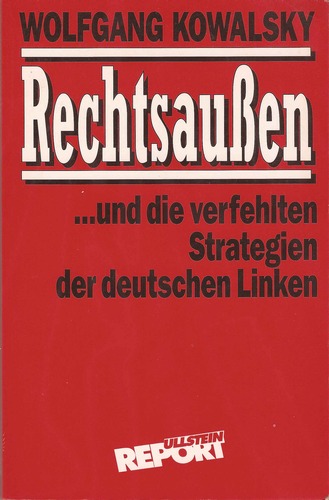Germany’s reunification in 1990 changed the world for me. The day the Berlin Wall came down in November 1989, I had cancelled the class I was supposed to teach and took my students to the place where until a day earlier the Iron Curtain had bisected the city. I wanted to experience history first-hand. The news of the reunification a year later was a dream-come-true for me. During the preceding years, I had pondered a variety of ways by which a reunification of Germany may have been achieved, but events ended up taking an entirely unexpected turn. What counted, however, was this: Germany was reunified – reason enough for me to rejoice. Many politicians and publicists on the left took a different view of events. The Communism regime had collapsed. Here was a new chance for liberty. The situation caused quite a stir in me, and I could not imagine spending the coming years or decades as an academic historian, burying myself in archives. History was happening here and now. And I had no intention to limit my preoccupation with it to scientific study. Instead, I wanted to be among those who invested the political debate with fresh impetus. In 1992, I therefore transferred from my position as research assistant at the Free University of Berlin to the publishing houses of Ullstein and Propyläen, both rich in prestige and tradition.
Here, I became chief editor and initiated dozens of book projects. One of the ideas I had was to publish a book by the political scientist Jens Hacker about the misguided illusions some leftists entertained about former East Germany and about the Communist sleepers in West Germany who had nursed such notions. In 1990, nearly every politician, scientist and journalist claimed to have been in favour of Germany’s reunification all along. This book showed that this was by no means the case.
Back then, I edited many books by conservative politicians and scientists, among them one by Berlin’s former Senator for the Interior, Heinrich Lummer. However, I also made space for interesting publications by non-conformist left-wing writers. For instance, I published a book on “The Social Democrats and the Nation” by Tilman Fichter, a former SDS student union activist who had since moved on to become a senior Social Democrat figure in charge of training and education. Wolfgang Kowalsky of the IG Metall trade union got to publish a book discussing the proper way to confront the issue of right-wing extremism.
My work at Ullstein/Propyläen-Verlag, which was part of the Axel-Springer-Group, caught the attention of Claus Jacoby, the editor in chief of the daily DIE WELT. One day, he called me and asked me whether I felt like heading the desk for intellectual trends.








